Mad Hedge Technology Letter
December 30, 2024
Fiat Lux
Featured Trade:
(THE UNBEATABLE PARTNERSHIP)
(EMR), (GRMN), (AMBA), (NVDA), (DXCM), (CSCO), (INTC), (QCOM)
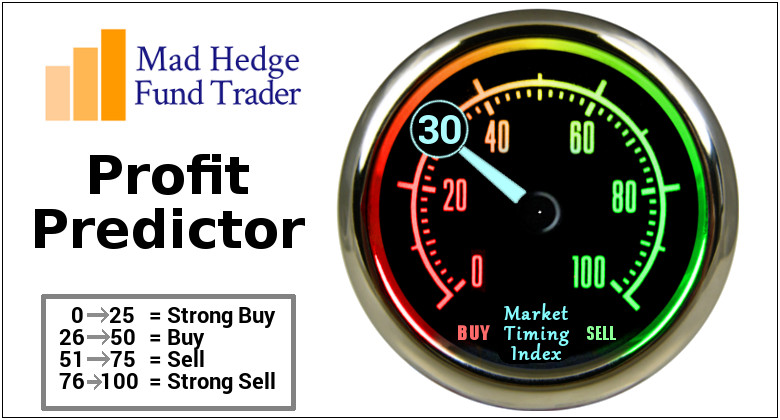
Mad Hedge Technology Letter
December 30, 2024
Fiat Lux
Featured Trade:
(THE UNBEATABLE PARTNERSHIP)
(EMR), (GRMN), (AMBA), (NVDA), (DXCM), (CSCO), (INTC), (QCOM)

Let me introduce to you one of the hottest trends in tech.
It has been on the tip of everyone's tongue for years, and that might be an understatement, but the interaction of the Internet of Things (IoT) and artificial intelligence (AI) offers companies a wide range of advantages.
In order to get the most out of IoT systems and to be able to interpret data, the symbiosis with AI is almost a must.
If the Internet of Things is merged with data analysis based on artificial intelligence, this is referred to as AIoT.
Moving forward, expect this to be the hot new phrase in an industry backdrop where investors love these hot catchphrases and monikers.
What is this used for?
Lower operating costs, shorter response times through automated processes, and helpful insights for business development are just a few of the notable advantages of the Internet of Things.
AI also offers a variety of business benefits: it reduces errors, automates tasks, and supports relevant business decisions. Machine learning as a sub-area of AI also ensures that models – such as neural networks – are adapted to data. Based on the models, predictions and decisions can be made. For example, if sensors deliver new data, they can be integrated into the existing modules.
The Statista Research Institute assumes that there will be 200 billion networked devices by 2026.
This is exactly where AI comes into play, which generates predictions based on the sensor values received.
However, many companies are still unable to properly benefit from the potential of connecting IoT and AI, or AIoT for short.
They are often skeptical about outsourcing their data - especially in terms of security and communication.
In part because the increased number of networked devices, which requires the connection of IoT and AI, increases the security requirements for infrastructure and communication structure enormously.
It is not surprising that companies are unsettled: Industrial infrastructures have grown historically due to constantly increasing requirements and present companies with completely new challenges, which manifest themselves, for example, in an increasing number of networked devices. With the combination of IoT and AI, many companies are venturing into relatively new territory.
By connecting IoT and AI, a continuous cycle of data collection and analysis is developing.
But, companies can no longer deny the advantages of AIoT because this technical combination makes networked devices and objects even more useful.
Based on the insights generated by the models, those responsible can make decisions more easily and reliably predict future events. In this way, a continuous cycle of data collection and analysis develops. With predictive maintenance, for example, production companies can forecast device failures and thus prevent them.
The combination of the two technologies also makes sense from the safety point of view: continuous monitoring and pattern recognition help to identify failure probabilities and possible malfunctions at an early stage – potential gateways can thus be better identified and closed in good time.
The result: companies optimize their processes, avoid costly machine failures, and at the same time reduce maintenance costs and thus increase their operational efficiency.
In this way, IoT and AI represent a profitable fusion: While AI increases the benefit of existing IoT solutions, AI needs IoT data in order to be able to draw any conclusions at all.
AIoT is, therefore, a real gain for companies of all sizes. They thus optimize processes, are less prone to errors, improve their products, and thus ensure their competitiveness in the long term.
Some hardware, software, and semiconductor stocks that will offer exposure into AIoT are Emerson Electric Co. (EMR), Garmin (GRMN), Ambarella (AMBA), Nvidia (NVDA), DexCom (DXCM), Cisco (CSCO), Intel (INTC), and Qualcomm (QCOM).
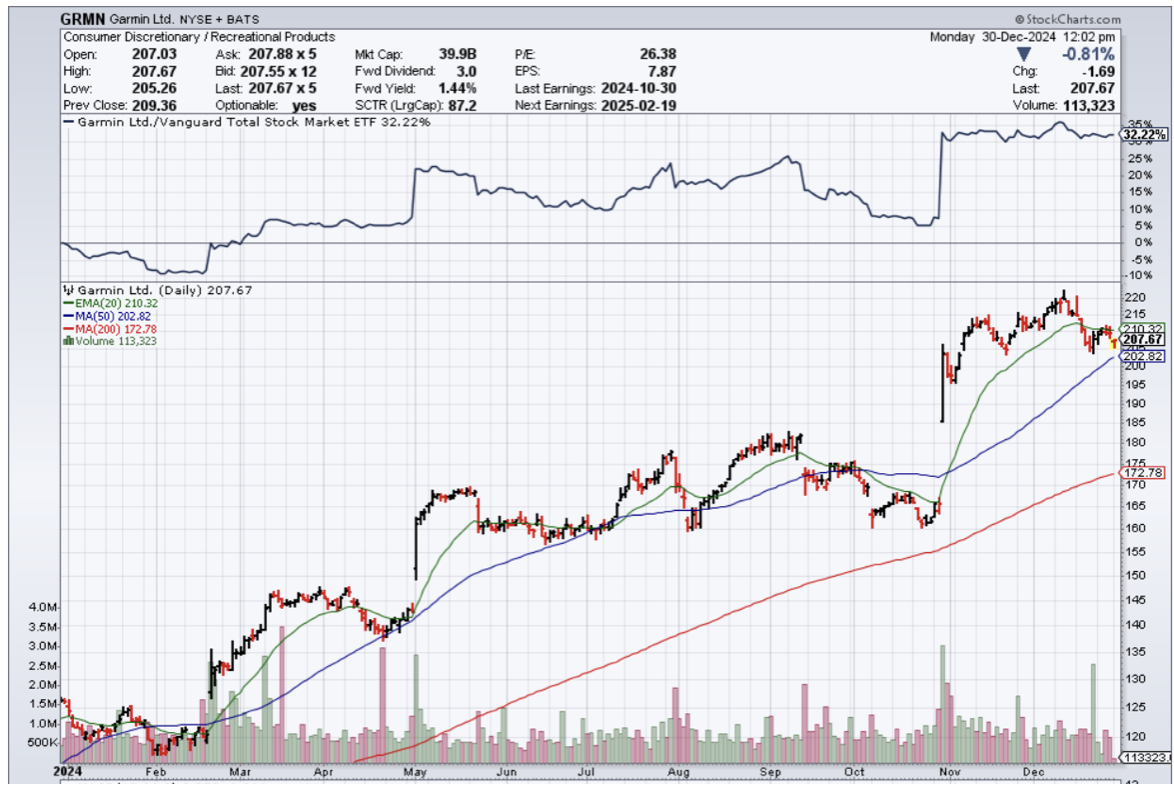


Mad Hedge Technology Letter
July 26, 2024
Fiat Lux
Featured Trade:
(THE UNBEATABLE PARTNERSHIP)
(EMR), (GRMN), (AMBA), (NVDA), (DXCM), (CSCO), (INTC), (QCOM)
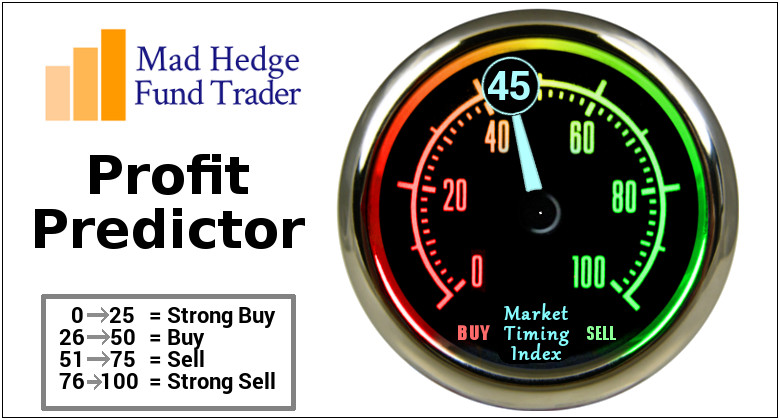
Let me introduce to you one of the hottest trends in tech.
It has been on the tip of everyone's tongue for years, and that might be an understatement, but the interaction of the Internet of Things (IoT) and Artificial Intelligence (AI) offers companies a wide range of advantages.
In order to get the most out of IoT systems and to be able to interpret data, the symbiosis with AI is almost a must.
If the Internet of Things is merged with data analysis based on artificial intelligence, this is referred to as AIoT.
Moving forward, expect this to be the hot new phrase in an industry backdrop where investors love these hot catchphrases and monikers.
What is this used for?
Lower operating costs, shorter response times through automated processes, and helpful insights for business development are just a few of the notable advantages of the Internet of Things.
AI also offers a variety of business benefits: it reduces errors, automates tasks, and supports relevant business decisions. Machine learning as a sub-area of AI also ensures that models – such as neural networks – are adapted to data. Based on the models, predictions and decisions can be made. For example, if sensors deliver new data, they can be integrated into the existing modules.
The Statista Research Institute assumes that there will be 75 billion networked devices by 2025.
This is exactly where AI comes into play, which generates predictions based on the sensor values received.
However, many companies are still unable to properly benefit from the potential of connecting IoT and AI, or AIoT for short.
They are often skeptical about outsourcing their data - especially in terms of security and communication.
In part because the increased number of networked devices, which requires the connection of IoT and AI, increases the security requirements for infrastructure and communication structure enormously.
It is not surprising that companies are unsettled: Industrial infrastructures have grown historically due to constantly increasing requirements and present companies with completely new challenges, which manifest themselves, for example, in an increasing number of networked devices. With the combination of IoT and AI, many companies are venturing into relatively new territory.
By connecting IoT and AI, a continuous cycle of data collection and analysis is developing.
But companies can no longer deny the advantages of AIoT because this technical combination makes networked devices and objects even more useful.
Based on the insights generated by the models, those responsible can make decisions more easily and reliably predict future events. In this way, a continuous cycle of data collection and analysis develops. With predictive maintenance, for example, production companies can forecast device failures and thus prevent them.
The combination of the two technologies also makes sense from the safety point of view: continuous monitoring and pattern recognition help to identify failure probabilities and possible malfunctions at an early stage – potential gateways can thus be better identified and closed in good time.
The result: companies optimize their processes, avoid costly machine failures, and at the same time reduce maintenance costs and thus increase their operational efficiency.
In this way, IoT and AI represent a profitable fusion: While AI increases the benefit of existing IoT solutions, AI needs IoT data in order to be able to draw any conclusions at all.
AIoT is therefore a real gain for companies of all sizes. They thus optimize processes, are less prone to errors, improve their products and thus ensure their competitiveness in the long term.
Some hardware, software, and semiconductor stocks that will offer exposure into AIoT are Emerson Electric Co. (EMR), Garmin (GRMN), Ambarella (AMBA), Nvidia (NVDA), DexCom (DXCM), Cisco (CSCO), Intel (INTC), and Qualcomm (QCOM).
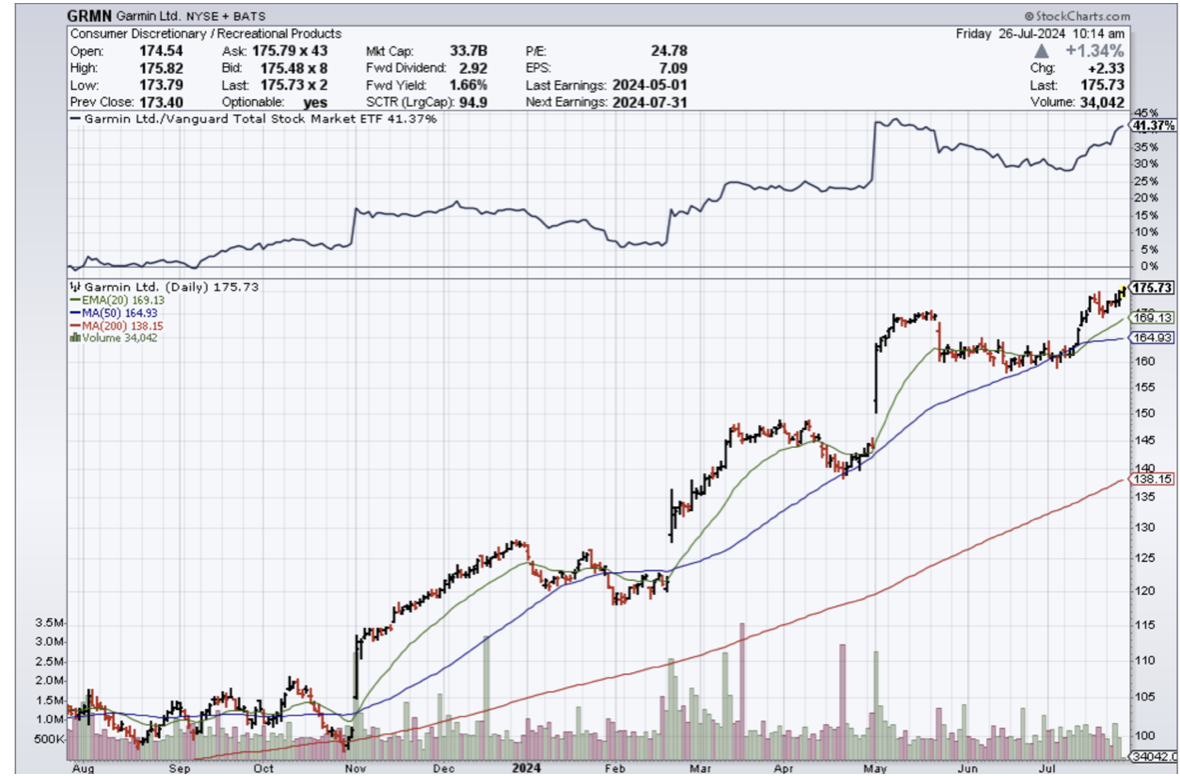
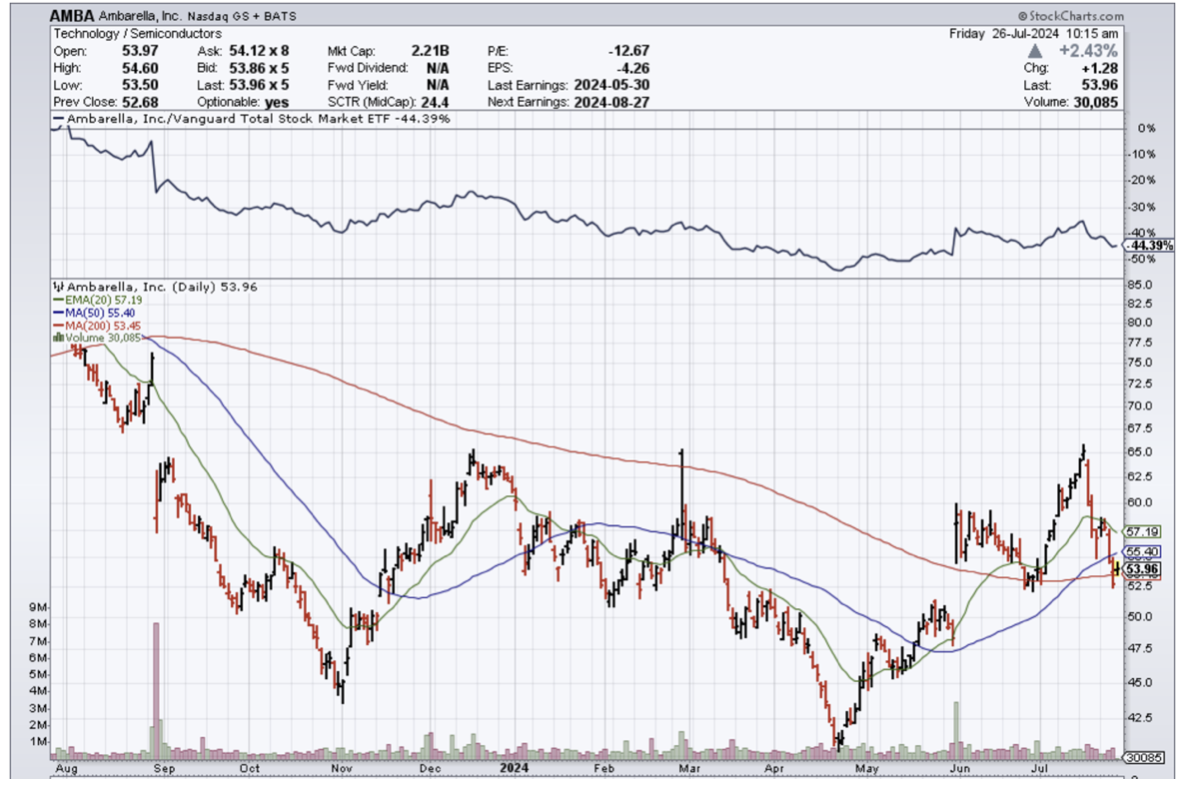
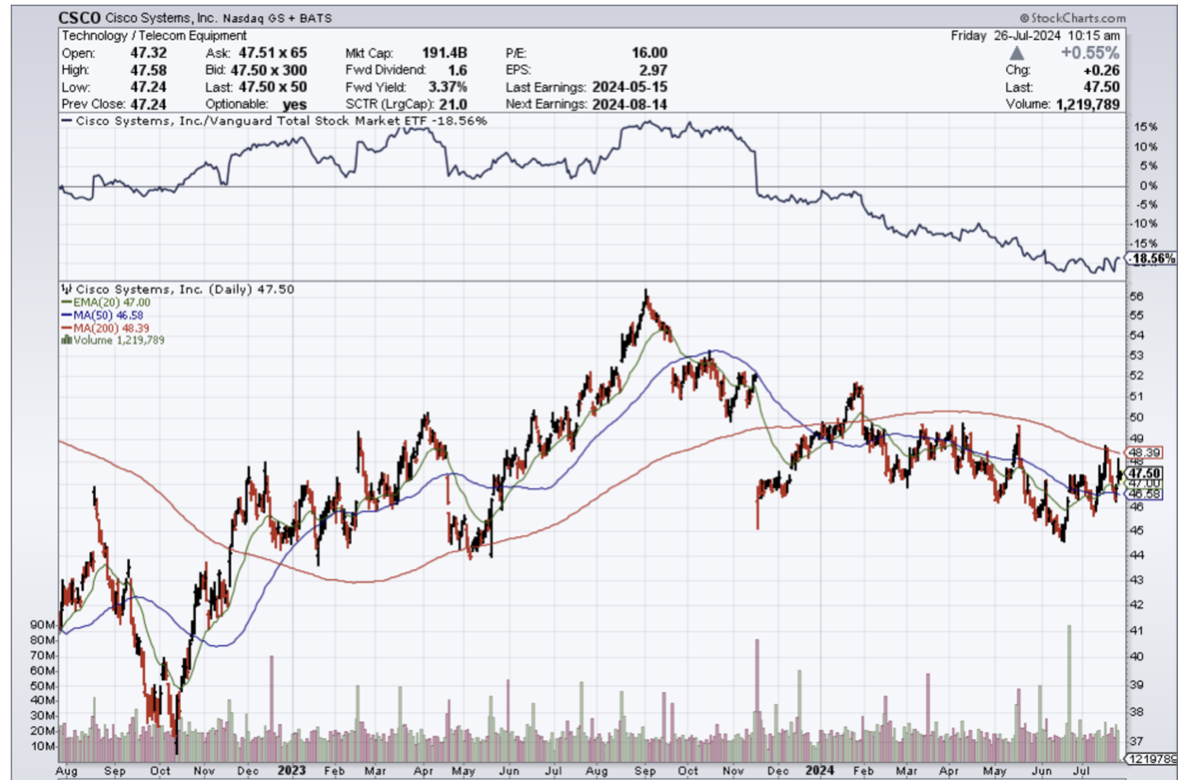
Mad Hedge Technology Letter
February 27, 2023
Fiat Lux
Featured Trade:
(THE UNBEATABLE PARTNERSHIP)
(EMR), (GRMN), (AMBA), (NVDA), (DXCM), (CSCO), (INTC), (QCOM)
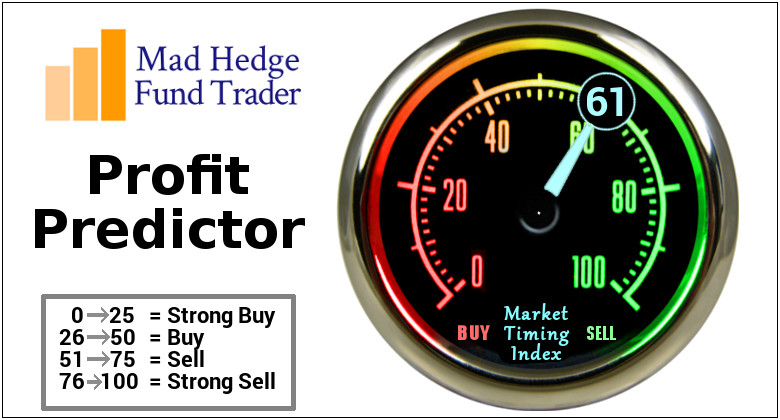
Let me introduce to you one of the hottest trends in tech.
They have been on the tip of everyone's lips for years, and that might be an understatement, but the interaction of the internet of things (IoT) and artificial intelligence (AI) offers companies a wide range of advantages.
In order to get the most out of IoT systems and to be able to interpret data, the symbiosis with AI is almost a must.
If the Internet of Things is merged with data analysis based on artificial intelligence, this is referred to as AIoT.
Moving forward, expect this to be the hot new phrase in an industry backdrop where investors love these hot catchphrases and monikers.
What is this used for?
Lower operating costs, shorter response times through automated processes, and helpful insights for business development are just a few of the notable advantages of the Internet of Things.
AI also offers a variety of business benefits: it reduces errors, automates tasks, and supports relevant business decisions. Machine learning as a sub-area of AI also ensures that models – such as neural networks – are adapted to data. Based on the models, predictions and decisions can be made. For example, if sensors deliver new data, they can be integrated into the existing modules.
The Statista research institute assumes that there will be 75 billion networked devices by 2025.
This is exactly where AI comes into play, which generates predictions based on the sensor values received.
However, many companies are still unable to properly benefit from the potential of connecting IoT and AI, or AIoT for short.
They are often skeptical about outsourcing their data - especially in terms of security and communication.
In part because the increased number of networked devices, which requires the connection of IoT and AI, increases the security requirements for infrastructure and communication structure enormously.
It is not surprising that companies are unsettled: Industrial infrastructures have grown historically due to constantly increasing requirements and present companies with completely new challenges, which manifest themselves, for example, in an increasing number of networked devices. With the combination of IoT and AI, many companies are venturing into relatively new territory.
By connecting IoT and AI, a continuous cycle of data collection and analysis is developing.
But companies can no longer deny the advantages of AIoT because this technical combination makes networked devices and objects even more useful.
Based on the insights generated by the models, those responsible can make decisions more easily and reliably predict future events. In this way, a continuous cycle of data collection and analysis develops. With predictive maintenance, for example, production companies can forecast device failures and thus prevent them.
The combination of the two technologies also makes sense from the safety point of view: continuous monitoring and pattern recognition help to identify failure probabilities and possible malfunctions at an early stage – potential gateways can thus be better identified and closed in good time.
The result: companies optimize their processes, avoid costly machine failures, and at the same time reduce maintenance costs and thus increase their operational efficiency.
In this way, IoT and AI represent a profitable fusion: While AI increases the benefit of existing IoT solutions, AI needs IoT data in order to be able to draw any conclusions at all.
AIoT is therefore a real gain for companies of all sizes. They thus optimize processes, are less prone to errors, improve their products and thus ensure their competitiveness in the long term.
Some hardware, software, and semiconductor stocks that will offer exposure into AIoT are Emerson Electric Co. (EMR), Garmin (GRMN), Ambarella (AMBA), Nvidia (NVDA), DexCom (DXCM), Cisco (CSCO), Intel (INTC), and Qualcomm (QCOM).
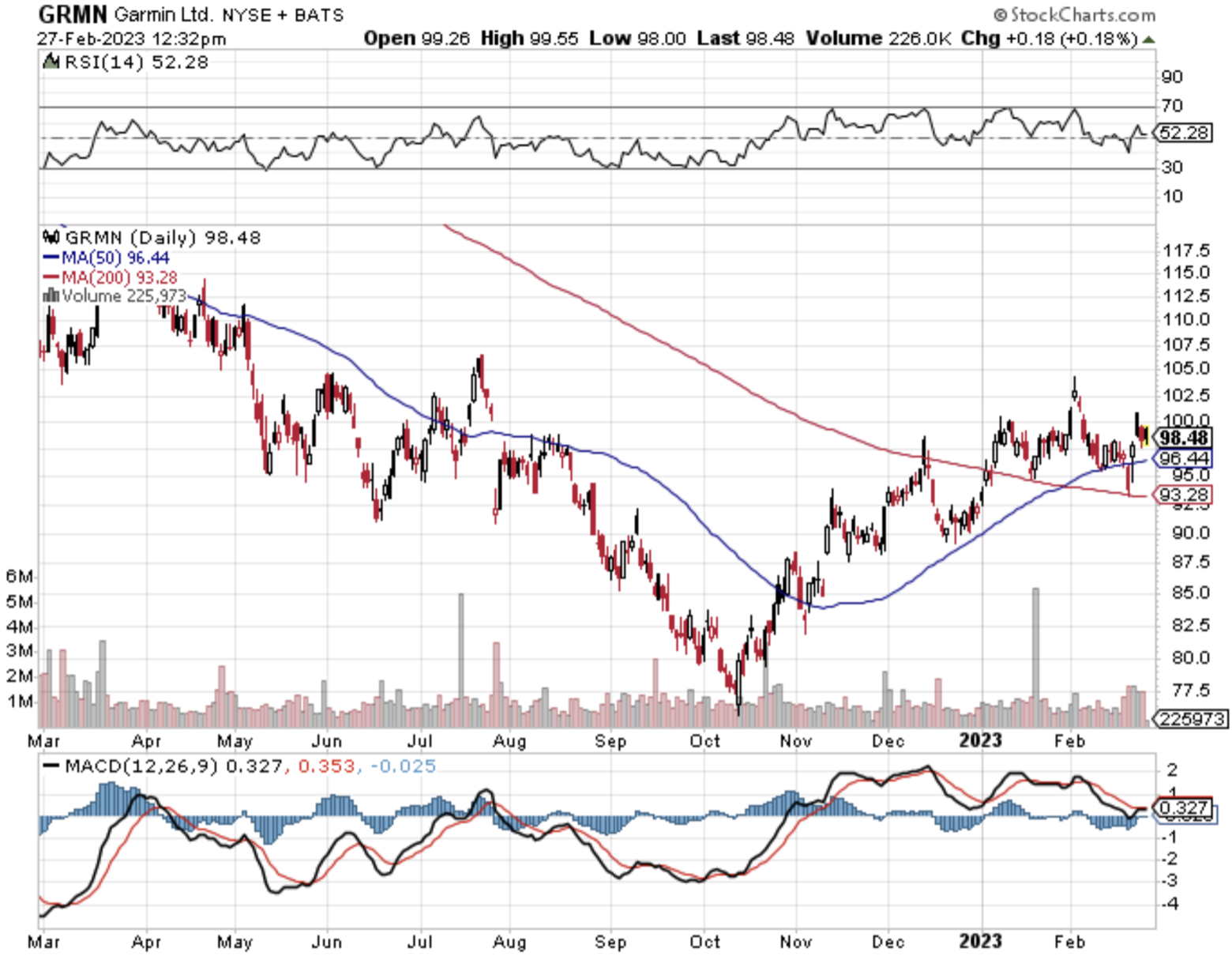
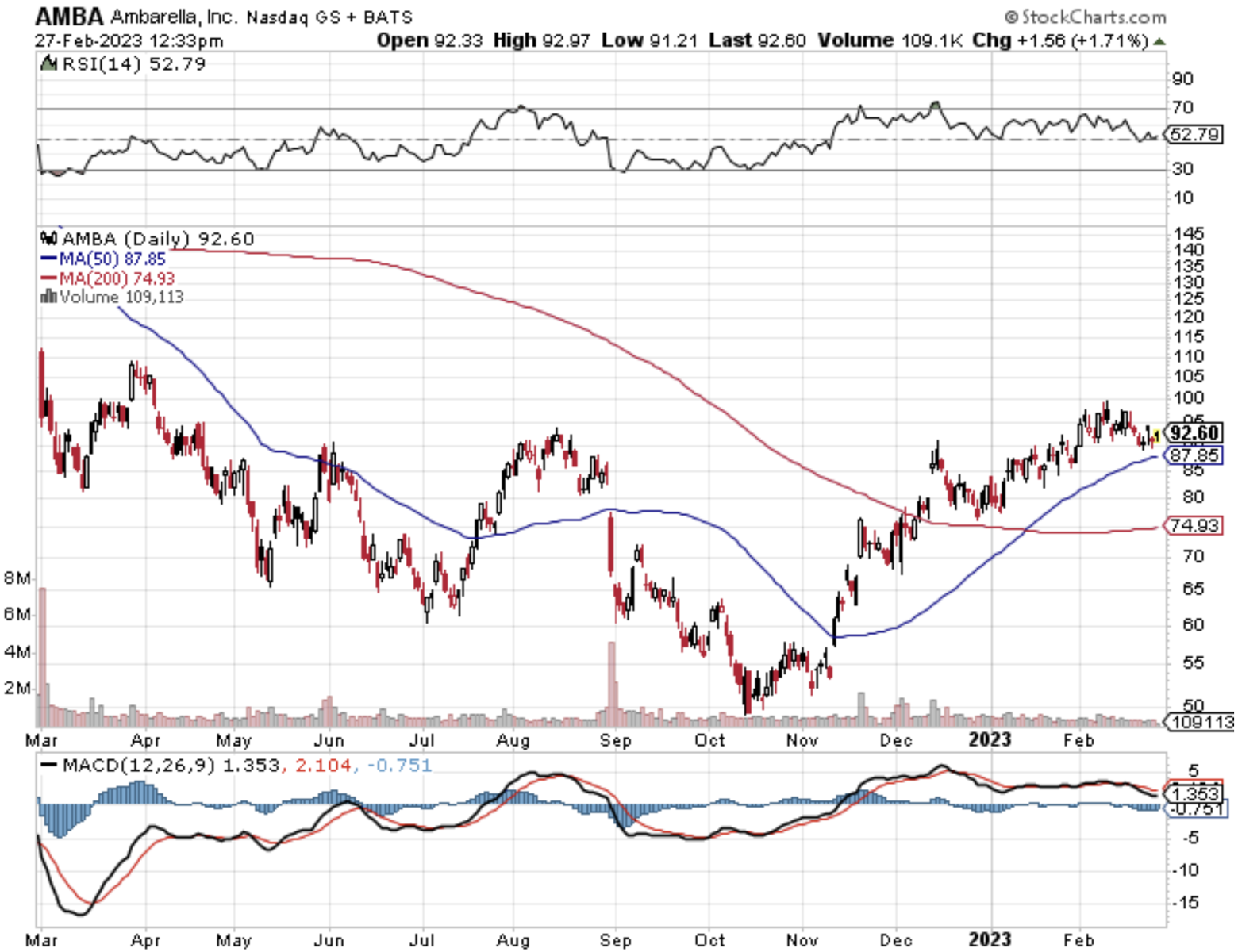

Mad Hedge Technology Letter
October 15, 2021
Fiat Lux
Featured Trade:
(DEATH OF THE SPORTS GYM)
(PTON), (NLS), (GRMN), (LULU), (PLNT)
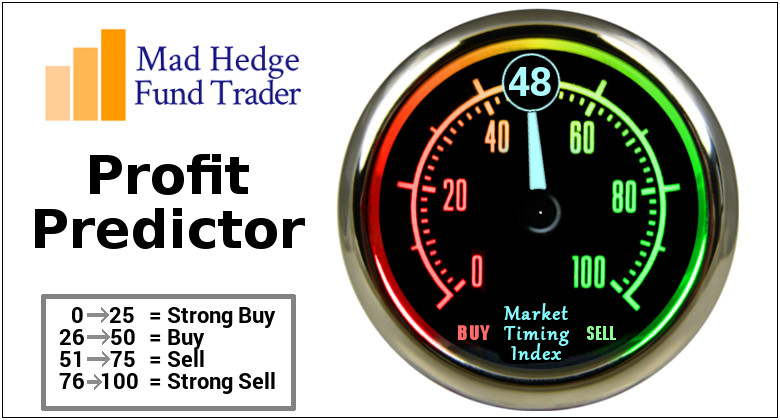
I hope for your sake that you don’t own a gym! — because one area that will certainly experience transformation into mainly smart products is fitness.
In the long term, this would be classified as a terrible investment, and I will tell you why.
The global digitally connected gym equipment market is projected to separate itself from the equipment of the past.
No more bench presses and barbells.
When I say smart fitness products, I am not just talking about Peloton (PTON) — though they are the trailblazer of the group.
Rising technological advancements in the fitness and gym equipment market are happening at warp speed.
Rapid digitalization of the health and fitness industry along with the increased utilization of smart machines is making products better and more efficient.
There are advantages for the consumers like storage, monitoring, and analysis of their fitness performances and the ability to log these details for future references.
New platforms will start popping up that integrate gym equipment and sports equipment along with the training and coaching software.
My personal favorite is Tonal.
This machine is ingenious and uses its smart cable machine to perform strength training exercises.
It’s essentially a 24-inch iPad plastered on the wall with cables and is the Tesla of the smart gym industry with onscreen coaches that guide you through your workout.
Tonal’s AI automatically adjusts weight based on a user’s strength during workouts. Rather than physical weights, Tonal uses electromagnetic force to produce up to 200 pounds of resistance.
Artificial intelligence (AI) is there to track everything you do, analyze it, and decide what you're going to do next, so you end up getting a much better workout, in a shorter amount of time, in the convenience of your home.
With precise data measurement, Tonal can measure the quality of every single repetition, decide how much weight one should lift, and adjust weight in one-pound increments.
To visit their website, click here. (https://www.tonal.com/)
Treadmills are anticipated to hold the largest revenue shares of the market and dominate the market segment on the account of rising instances of cardiovascular diseases.
Strength training equipment is expected to rapidly increase sales by the consumers as well as the increasing inclination of regular fitness enthusiasts over bodybuilding and strength building.
As for specific smart gym stocks, Peloton (PTON) and Nautilus, Inc. (NLS) had huge run-ups in 2020 as business boomed during the health crisis.
These two stocks have come back to life during the “reopening trade.” They after going through a consolidation phase in 2021, but I do believe it is a good time to buy during a low patch.
Conversely, a gym franchise stock Planet Fitness, Inc. (PLNT) had a terrible 2020 because of the mandated closures but has followed up a bad year with a sensational year as in-person gym activity has reversed.
However, I believe the situation will be quite grim in the long haul for in-person gym aficionados, as Tonal proves, gyms will migrate into the confines of our homes simply because the technology now is TOO GOOD to justify getting in a car to drive 30 minutes to the gym, spending 15 minutes changing in the locker rooms, only to then start a workout.
Tonal can almost fit in a kitchen pantry — it’s an iPad with attached cables and nothing more than that.
Its compact nature will attract many gym enthusiasts and one doesn’t need to allocate a whole room for a home gym, even a hallway can suffice with Tonal.
Tonal can get better, but I specifically thought the programmed training dialogue from the A.I. trainers were cheesy.
But it’s good enough that it lays down the marker for in-home smart gyms to gain market share in the future, which is why I believe franchise gyms will be made redundant.
Unfortunately, Tonal is a private company and Lebron James just made a big investment to buy a piece of it.
Alternatively, a direct play that I like for the smart gym is Garmin Ltd. (GRMN) who produces a variety of smart fitness products and specializes in navigation. This stock is immune to the in-person or at-home gym question because their products will get used no matter what.
A second derivative play of the smart gym is the clothes that are needed to work out.
Although not a tech stock, workout apparel stock Lululemon Athletica Inc. (LULU) made hay last year and their stock has basically moved from the lower left to the upper right for the past 10 years with minimal volatility.
So does this mean the end of the sports gym as we know it?
I am not calling for the death of gyms yet, but we have definitely started down that path albeit it incrementally and once Tonal lookalike products become a little more affordable, kiss goodbye to many people going to the gym.

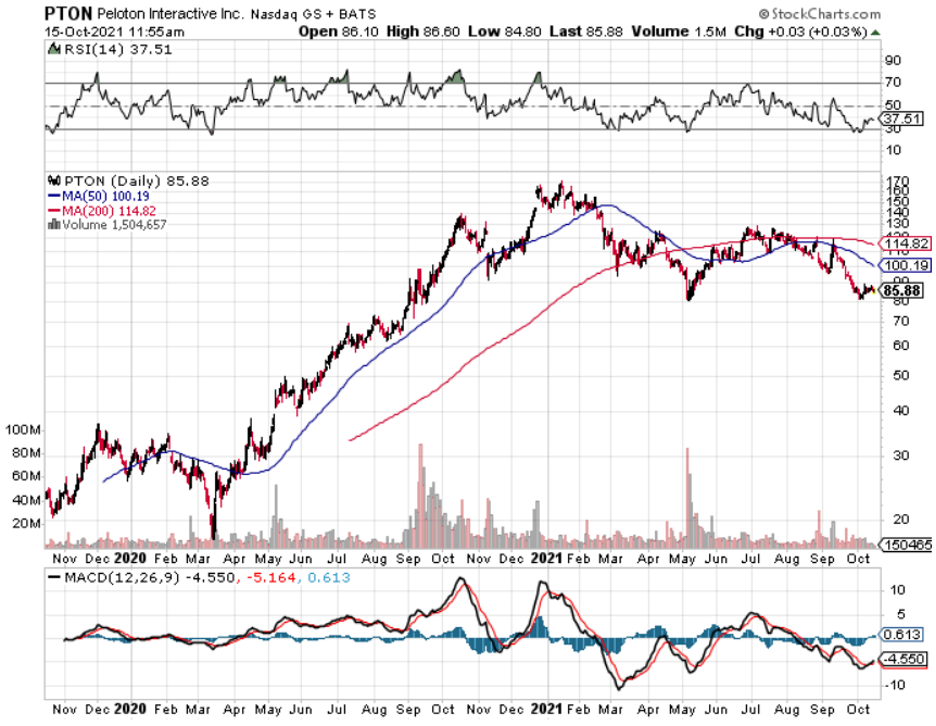
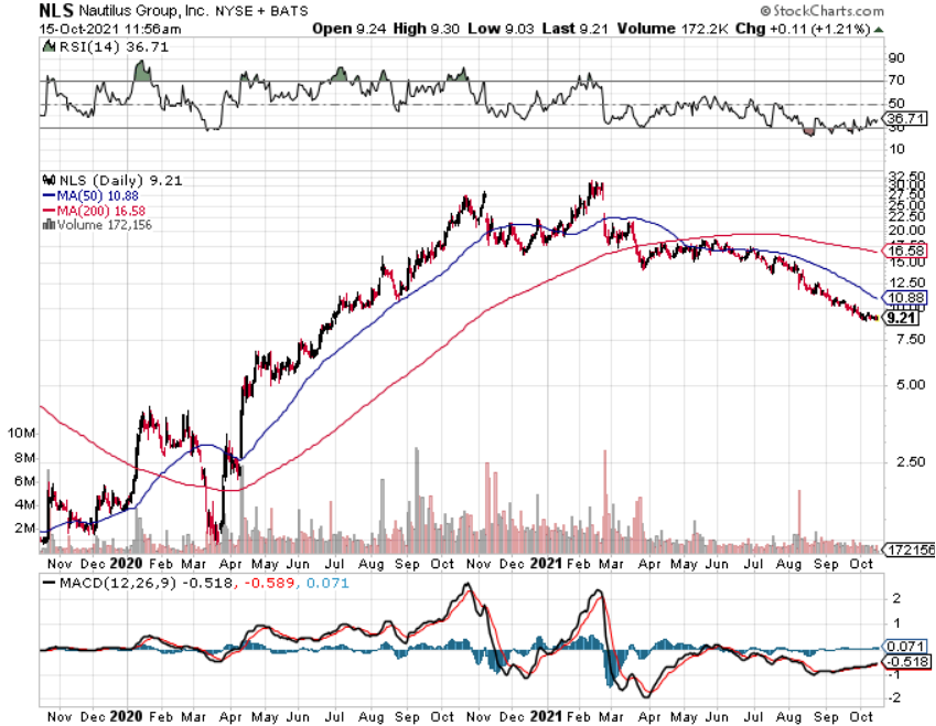
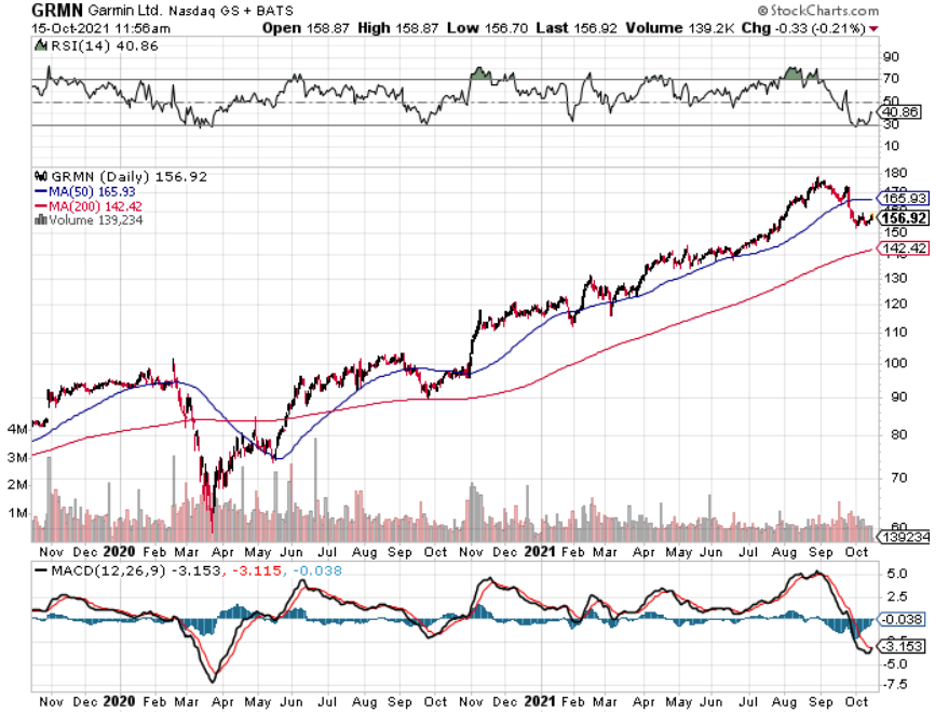
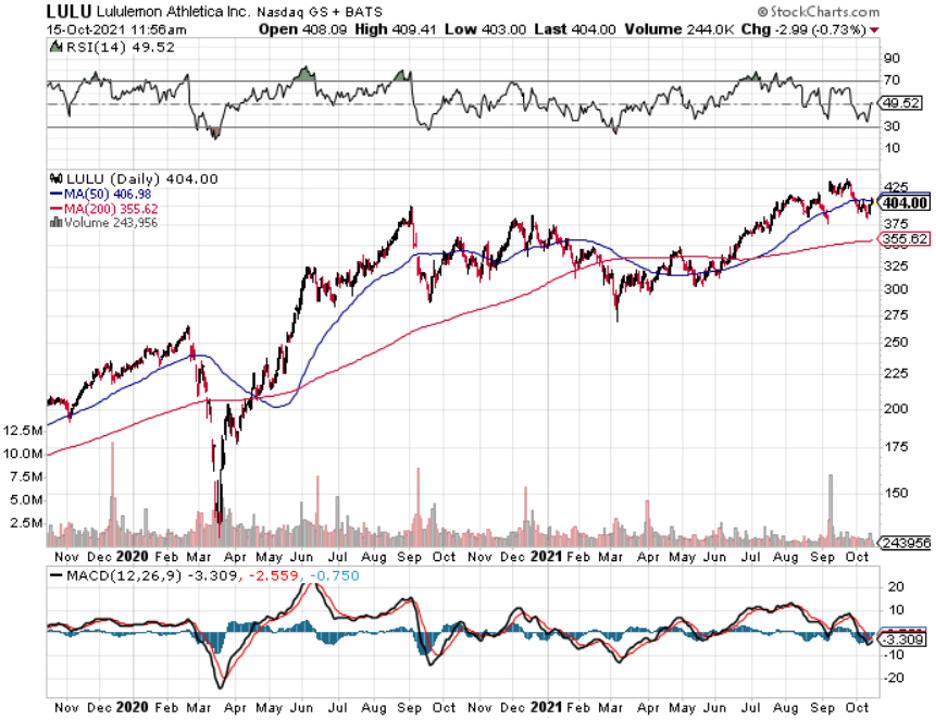
Mad Hedge Biotech & Healthcare Letter
July 20, 2021
Fiat Lux
FEATURED TRADE:
(A SNAPSHOT ON HOW TO LIVE A BETTER LIFE)
(DXCM), (CVS), (WBA), (RAD), (MDT), (ABBT), (SENS),
(TDOC), (AMWL), (AMZN), (AAPL), (GOOGL), (GRMN)
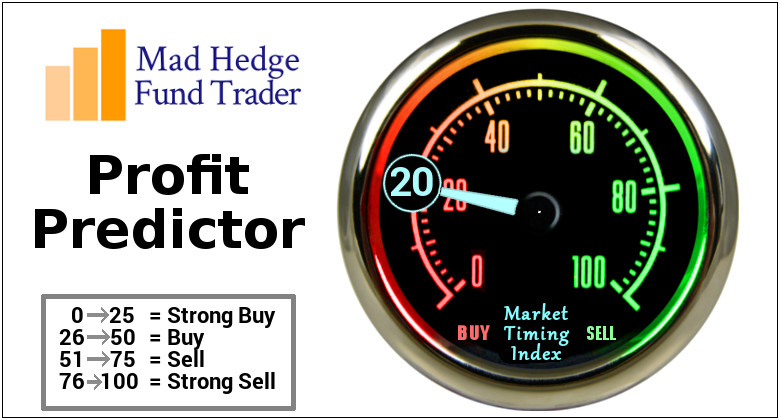
The routine medical check-ups we have today are primarily based on physical exams that were developed way back in the 1820s, utilizing tools that haven’t been upgraded for over a century.
More alarmingly, all we go through is a “comprehensive” health check once every year, offering us just a snapshot of what’s truly going on in our bodies.
If anything, we monitor the releases of new software for our phones and laptops more than we pay attention to our own bodies.
As we’ve proven with the COVID-19 pandemic, so much can happen in a year
Truth be told, our bodies can deteriorate at lightning speed and without any warning. That’s why it’s terrifying to think that we’re not doing as much to monitor our health.
So, what can we do to change this? How can we be more proactive when it comes to our health?
The COVID-19 pandemic has brought many changes into our lives, and this is one of the biggest transformations it has done: an exponential spike in demand for telehealth services.
One of the major issues between patients and doctors at the height of the pandemic was how to go through the physical exams without actual physical contact.
Clearly, it’s not possible to hear a heart murmur or irregular breathing over a video call.
This is where a lot of innovative companies come in.
For a more specialized exam, HD Medical released a credit card-sized device called HealthyU.
Patients simply touch it with their finger, and the device can instantaneously measure their heart rate and sounds, temperature, and even oxygen saturation.
All these data would then be sent to their doctors or health providers in real-time.
HealthyU also has a remote EKG, which effectively allows it to serve as a portable roadmap to a patient’s heart health and helps doctors monitor for signs of heart attacks and arrhythmias.
For example, there’s this handheld exam kit called Tyto that patients can use to perform their own guided medical exams.
This palm-sized gadget is linked to an app, so your doctor can monitor you remotely.
Patients suffering from a sore throat can use Tyto’s camera to let the doctors see the back of their throats, while those struggling from chest pains can easily use the stethoscope to help their physicians listen to their lungs and hearts.
And these are just for physical exams. There are more advancements in health monitoring, and this is where wearable technology comes in.
Wearable technology is considered one of the most promising growth drivers, largely due to the health sector.
The market size for this segment is estimated to rise from $116.2 billion in 2021 to $265.4 billion by 2026, showing off an 18% CAGR growth within a 5-year period.
Applications for wearables have expanded to areas including medical surgery as well as internables and implantables or sensors, which can be fitted into our bodies to help doctors observe various health parameters.
It’s no wonder brands like Apple (AAPL) with Apple Watch, Google (GOOGL) with Fitbit, and Garmin (GRMN) have been working overtime to try to cover as much of the wearable health market as possible.
So far, these products provide extensive data ranging from calories burned to our heart rates.
Aside from them, there are other wearables in the market today that could change the landscape of the health industry.
One of them is the Oura Ring, which was first introduced in 2013.
Designed to be worn 24 hours a day, this device measures the bodily functions of the user. It gathers data through infrared light sensors that touch the finger arteries.
One of the most impressive things it can do is monitor your sleep movements to help determine early onset of some neurodegenerative diseases like Parkinson’s.
The information is all sent to the app, which users can access via their smartphones. The Oura Ring is somewhere between $299 and $999, depending on your preferences in style and color.
Although it’s yet to be a mainstream product, the Oura Ring was provided to NBA players when they resumed their season amid the COVID-19 pandemic.
The device was used to help the basketball stars monitor their health.
In fact, a joint study with the University of California San Francisco showed that the Oura Ring was able to help detect the common symptoms of COVID-19 three days earlier and with as high as 90% accuracy.
Another impressive health monitoring advancement covers the glucose monitoring product line of Dexcom (DXCM).
The primary goal of Dexcom is to take away the guesswork that comes with finger pricking.
By offering a wearable sensor, people with diabetes can easily and accurately monitor their glucose levels.
What’s even more convenient is that Dexcom’s wearable is available in practically all large pharmacies like CVS (CVS), Walgreens (WBA), and Rite Aid (RAD).
To date, Dexcom’s biggest competitors include Medtronic’s (MDT) Guardian Connect, Abbott’s (ABBT) Freestyle Libre, and Senseonics’ (SENS) Eversense.
These are only some of the emerging technologies that could help us improve the quality of our lives today, with thousands more expected to follow suit in the years to come.
For an endlessly advancing world with smartphones, supercomputers, smart homes, and even self-driving cars receiving software updates virtually every week, it’s absurd to think that we only allot a single check-in on our health annually.
But with the advent of these technologies and the increasing popularity of telehealth services spearheaded by the likes of Teladoc (TDOC), Amwell (AMWL), and even Amazon (AMZN), it looks like we’re starting to finally pay more attention to our health.
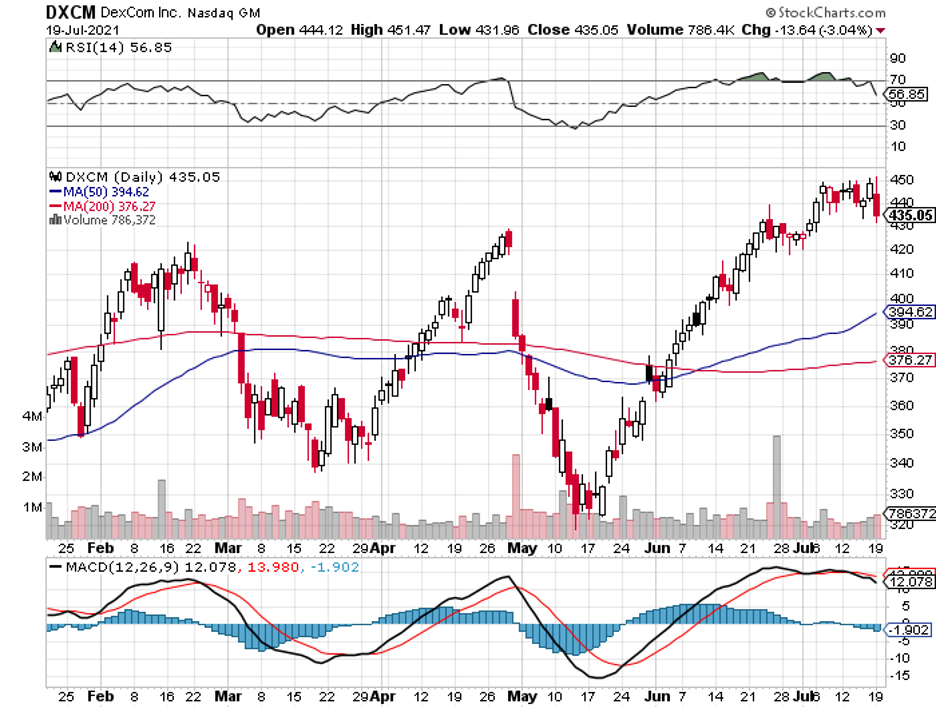

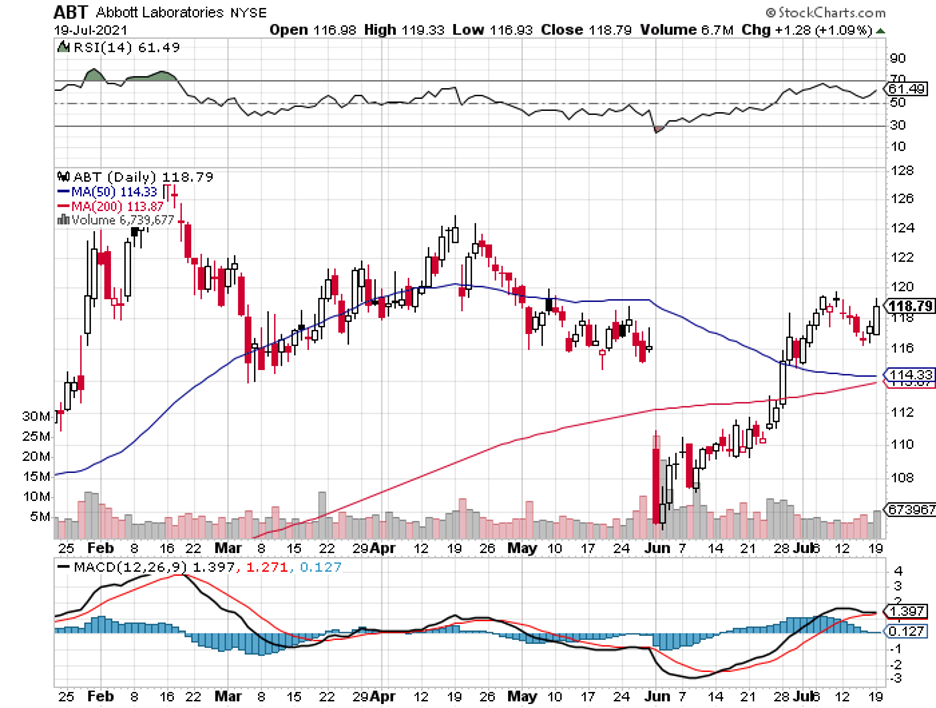
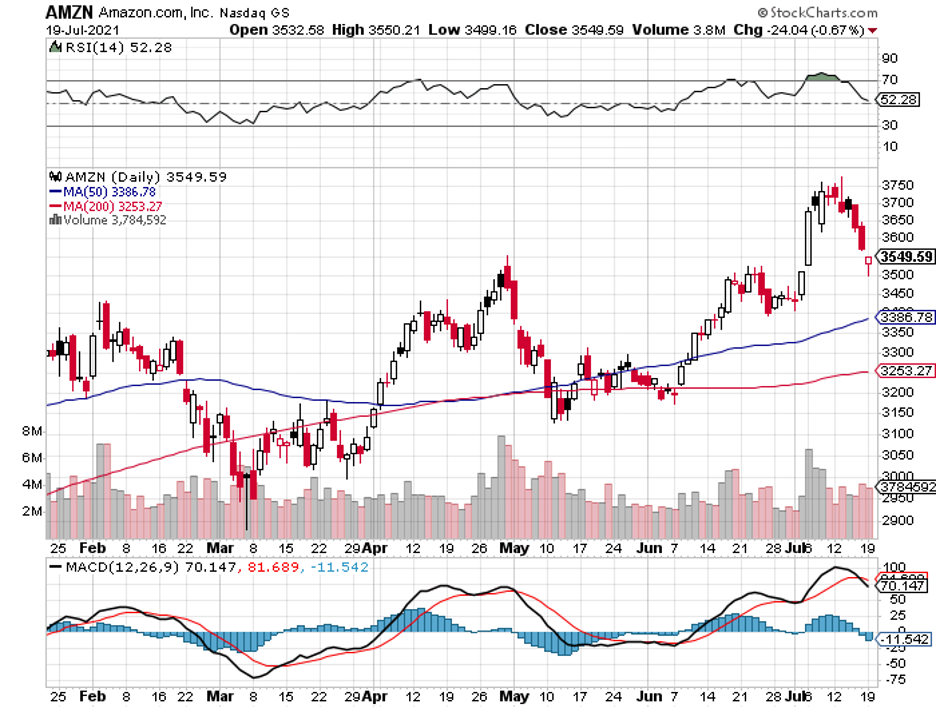
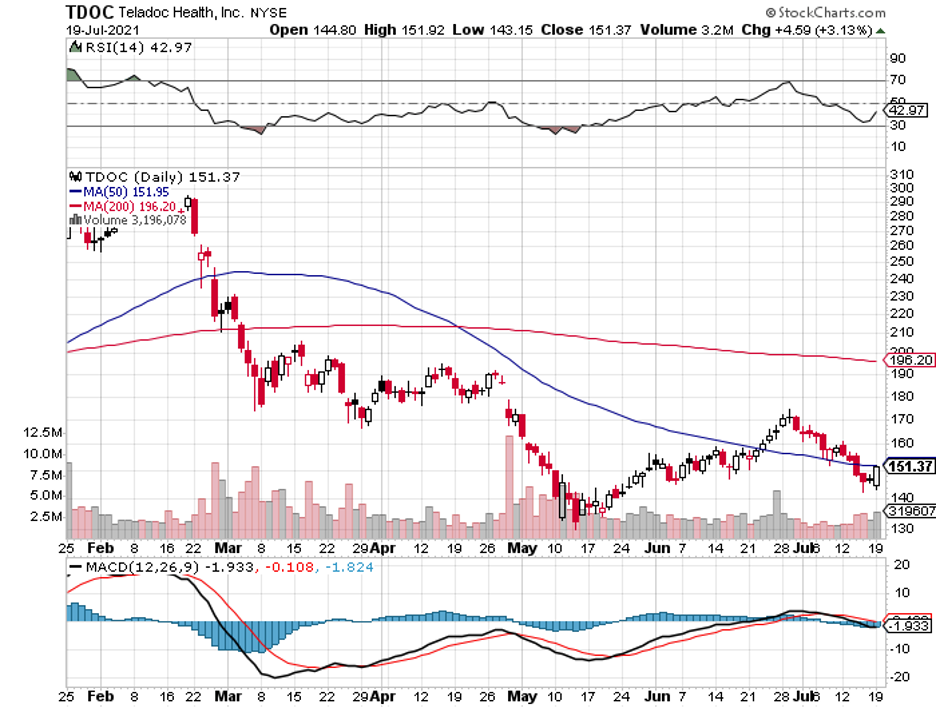
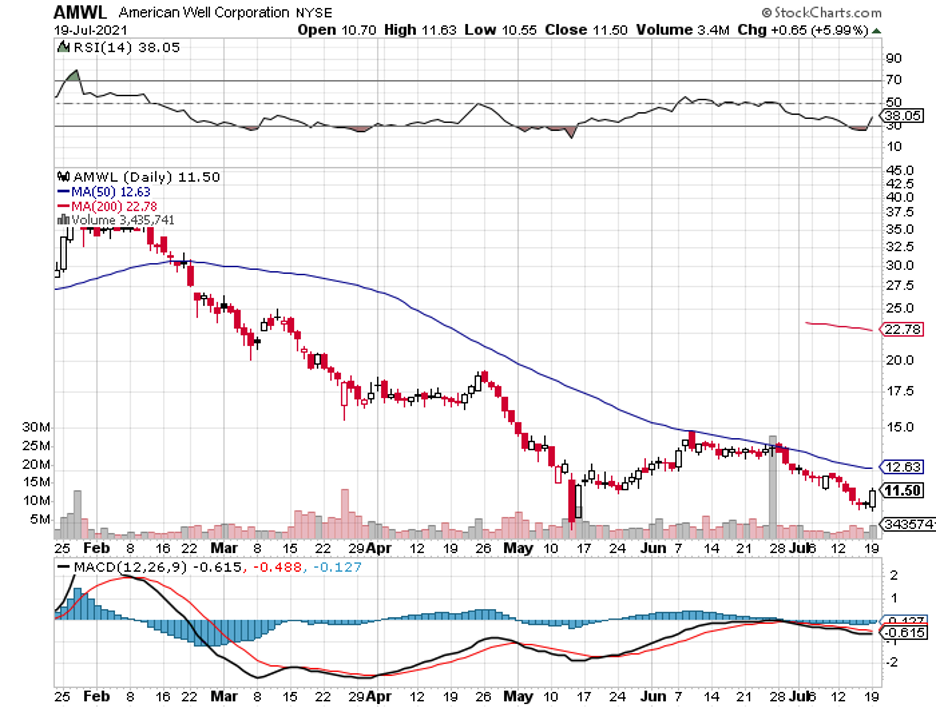
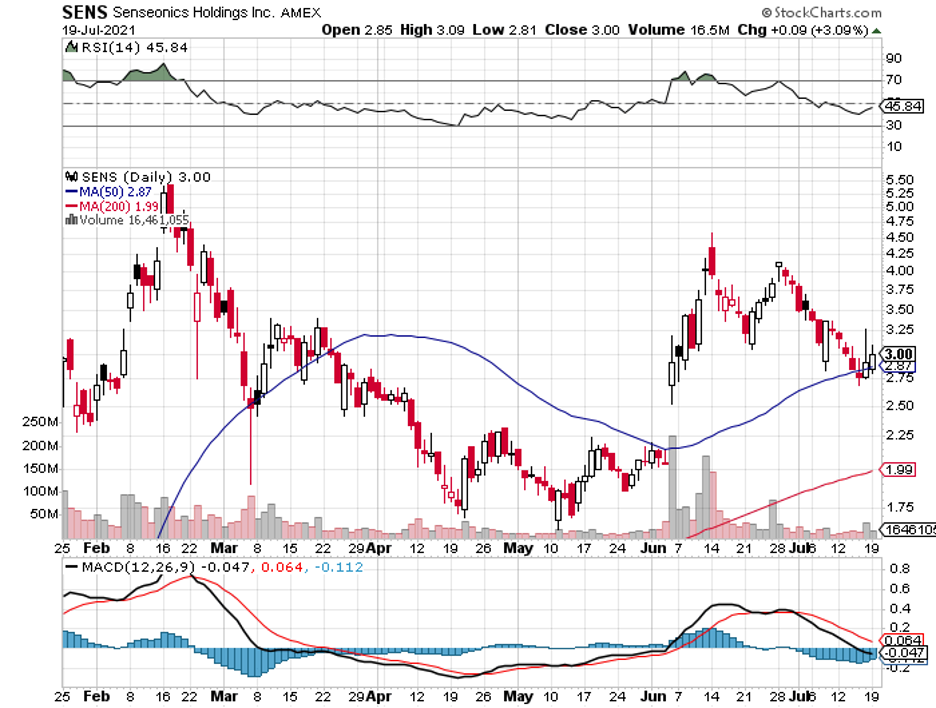
Legal Disclaimer
There is a very high degree of risk involved in trading. Past results are not indicative of future returns. MadHedgeFundTrader.com and all individuals affiliated with this site assume no responsibilities for your trading and investment results. The indicators, strategies, columns, articles and all other features are for educational purposes only and should not be construed as investment advice. Information for futures trading observations are obtained from sources believed to be reliable, but we do not warrant its completeness or accuracy, or warrant any results from the use of the information. Your use of the trading observations is entirely at your own risk and it is your sole responsibility to evaluate the accuracy, completeness and usefulness of the information. You must assess the risk of any trade with your broker and make your own independent decisions regarding any securities mentioned herein. Affiliates of MadHedgeFundTrader.com may have a position or effect transactions in the securities described herein (or options thereon) and/or otherwise employ trading strategies that may be consistent or inconsistent with the provided strategies.
This site uses cookies. By continuing to browse the site, you are agreeing to our use of cookies.
OKLearn moreWe may request cookies to be set on your device. We use cookies to let us know when you visit our websites, how you interact with us, to enrich your user experience, and to customize your relationship with our website.
Click on the different category headings to find out more. You can also change some of your preferences. Note that blocking some types of cookies may impact your experience on our websites and the services we are able to offer.
These cookies are strictly necessary to provide you with services available through our website and to use some of its features.
Because these cookies are strictly necessary to deliver the website, refuseing them will have impact how our site functions. You always can block or delete cookies by changing your browser settings and force blocking all cookies on this website. But this will always prompt you to accept/refuse cookies when revisiting our site.
We fully respect if you want to refuse cookies but to avoid asking you again and again kindly allow us to store a cookie for that. You are free to opt out any time or opt in for other cookies to get a better experience. If you refuse cookies we will remove all set cookies in our domain.
We provide you with a list of stored cookies on your computer in our domain so you can check what we stored. Due to security reasons we are not able to show or modify cookies from other domains. You can check these in your browser security settings.
These cookies collect information that is used either in aggregate form to help us understand how our website is being used or how effective our marketing campaigns are, or to help us customize our website and application for you in order to enhance your experience.
If you do not want that we track your visist to our site you can disable tracking in your browser here:
We also use different external services like Google Webfonts, Google Maps, and external Video providers. Since these providers may collect personal data like your IP address we allow you to block them here. Please be aware that this might heavily reduce the functionality and appearance of our site. Changes will take effect once you reload the page.
Google Webfont Settings:
Google Map Settings:
Vimeo and Youtube video embeds:
